Grab your backpack, because adventure awaits!
Picture this: You, standing at the edge of a lush forest, feeling the anticipation of a thrilling journey coursing through your veins. The open road beckons, and you’re ready to answer the call. But hold on a second! If you’re new to the camping game, you might be wondering, “What do I even need to bring?” Fear not, fellow wanderer, for we’re here to equip you with the knowledge and wit you need to embark on your backpacking escapades.
Address the target audience: beginners who are eager to explore the great outdoors but need guidance.
If the mere thought of camping brings up memories of mosquito-filled nights, uncomfortably lumpy sleeping bags, and the fear of waking up face-to-face with a raccoon, then this article is for you. We’re here to help you navigate the wilderness like a pro, even if you’re more accustomed to binge-watching nature documentaries from the comfort of your couch. So, put on your adventure hat, strap on your backpack, and let’s get ready to explore the untamed beauty of the great outdoors!
Set the tone with humor and relatability.
Now, before we dive into the serious business of backpacking essentials, let’s take a moment to acknowledge something: Camping can be intimidating. But hey, who says we can’t have a little fun along the way? We’ll sprinkle this article with humor, because, let’s face it, laughing is just as important as knowing how to set up a tent without turning it into a kite in a windstorm. So, grab your sense of humor along with your camping gear, and let’s embark on this adventure together. Don’t worry, we promise not to make you eat bugs—unless they’re chocolate-covered.
I. Choosing the Right Backpack
Size matters: Selecting a backpack that fits your needs and body.
Now, let’s talk about the most crucial companion on your backpacking journey—the backpack itself. Choosing the right backpack is like finding your soulmate, but with fewer romantic candlelit dinners and more considerations of weight distribution. The first rule of backpack selection is simple: size matters. You don’t want a colossal behemoth that’ll make you resemble a pack mule or a puny bag that’ll have you doing laundry every other day.
Find a backpack that suits your needs and body type. Consider the duration of your trips and the amount of gear you plan to bring. A 50 to 65-liter backpack is usually a good starting point for most beginners. It’s spacious enough to fit your essentials while still maintaining a manageable weight.
The Goldilocks rule: Avoid backpacks that are too big or too small.
Remember the story of Goldilocks and the Three Bears? Well, your backpack should be like Goldilocks’ quest for the perfectly sized bowl of porridge—not too big and not too small, but just right. A backpack that’s too big will tempt you to fill it with unnecessary items (Do you really need that extra pair of sparkly shoes?). On the other hand, a backpack that’s too small will have you playing a never-ending game of Tetris, trying to squeeze everything in like a jigsaw puzzle from hell.
Pockets and compartments: Stash your stuff strategically.
If pockets were a currency, backpacks would be the Fort Knox of the outdoor world. Look for a backpack with multiple compartments, zippers, and pockets. These magical storage solutions will save you from the chaos of rummaging through your bag, searching for that elusive granola bar you swear you packed.
Designate compartments for different items: a dedicated sleeping bag compartment, side pockets for water bottles, and easy-access pockets for snacks or your trusty pocket-sized marshmallow catapult (just kidding, we made that one up). By organizing your belongings strategically, you’ll be the master of efficiency and ready for anything the wild throws your way.
Now that you’re equipped with backpack wisdom, it’s time to move on to the next camping essential—finding the perfect tent. Get ready to pitch your way to sweet dreams under the starry sky!
II. Sleeping Beauty: The Perfect Tent
Consider the weather: A cozy abode for all seasons.
Ah, the tent—the humble abode that shields us from nature’s whims and whimsies. When it comes to selecting a tent, one of the key factors to consider is the weather. Unless you have a burning desire to reenact scenes from “The Wizard of Oz” during a storm, it’s essential to choose a tent that can handle the elements.
For warmer climates, opt for a lightweight and well-ventilated tent that allows the breeze to dance through like a gentle lullaby. Look for mesh panels that keep pesky insects at bay while ensuring your shelter doesn’t transform into a sweat lodge.
If you’re venturing into colder regions, make sure to choose a four-season tent that can withstand the elements like a stoic Viking warrior. These tents are designed to endure gusty winds, snow, and freezing temperatures while providing insulation and protection from the harsh elements.
Easy setup: Don’t wrestle with your tent like it’s a WWE opponent.
You’ve finally reached your campsite, exhausted from a day of hiking and ready to rest your weary bones. The last thing you want is a tent setup that feels like a wrestling match with an angry octopus. Look for a tent that boasts an easy setup, preferably one that can be pitched in a jiffy without the need for advanced engineering degrees.
Consider freestanding tents that can stand upright without the need for stakes and guy lines, allowing you to relocate your tent if that perfect spot under the shade of a majestic tree suddenly becomes a mosquito convention. Remember, the faster you set up your tent, the sooner you can claim the title of “Supreme Ruler of Campfire Marshmallow Toasting.”
Room for two: Because adventures are best when shared.
Camping is an excellent opportunity to bond with friends, family, or even newfound companions you meet along the trail. So, when choosing a tent, keep in mind the importance of sharing your wilderness escapades with a tent mate.
Look for a tent that offers enough space for you and your adventure buddy, with sufficient headroom to avoid the dreaded face-to-ceiling collisions during midnight bathroom runs. Trust us, you don’t want to wake up to a comical yet painful tent acrobatics routine in the middle of the night.
By considering weather conditions, ease of setup, and accommodating your camping companions, you’ll find a tent that’ll be your cozy sanctuary amidst the wilderness. Stay tuned as we dive into the art of packing, where fashion meets practicality in the most adventurous way possible!
III. The Art of Packing: What to Bring
Clothing choices: The fine balance between being fashionable and not scaring off wildlife.
When it comes to packing your camping wardrobe, finding the right balance is key. You don’t want to be the person strutting through the forest in a full-on fashion show, scaring off wildlife with your extravagant sense of style. On the other hand, you don’t want to blend in so well that a squirrel mistakes you for a tree and starts nesting in your hair.
Opt for comfortable and moisture-wicking clothing that allows for easy movement. Think breathable fabrics like merino wool or synthetic blends that keep you cool during scorching summer hikes and cozy during chilly nights. Oh, and please spare us the neon-colored onesies unless you’re auditioning for a wilderness rave.
Layers are the key: Prepare for unpredictable weather like a superhero.
Nature has a mischievous side, and it loves to surprise us with weather changes more unpredictable than a game of musical chairs. To stay ahead of nature’s whims, layering is your superhero power. Pack a combination of base layers, insulating mid-layers, and outer shells to adapt to changing temperatures like a chameleon on a fashion runway.
Start with a moisture-wicking base layer to keep your skin dry and comfortable. Add insulating layers like fleece or down jackets to trap heat and keep you cozy. Top it all off with a waterproof and windproof outer shell to combat rain showers and unexpected gusts of wind. With layers as your trusty sidekick, you’ll be ready to conquer any weather-related curveballs nature throws at you.
Toiletries and personal hygiene: The importance of smelling decent in the wild.
Ah, the sweet scent of the great outdoors—a mix of pine needles, campfire smoke, and unwashed hiker socks. While embracing the natural aromas of nature is part of the camping experience, it’s still crucial to maintain some level of personal hygiene. After all, nobody wants to befriend a walking odor bomb.
Pack essential toiletries like biodegradable soap, toothpaste, a toothbrush, and a quick-drying towel. Remember, a little effort in personal hygiene goes a long way in ensuring your camping companions don’t flee in horror when you approach with open arms for a group hug.
As you master the art of packing, you’ll strike the perfect balance between comfort, practicality, and not scaring off woodland creatures with your fashion choices. In our next section, we’ll explore the world of camping cuisine and show you how to cook up a storm in the wild. Get your taste buds ready, because we’re about to take camping food to a whole new level!
IV. Food for Thought: Fueling Your Adventure
The magic of trail mix: The survival snack that will save your life.
When it comes to sustenance in the wild, trail mix is the unsung hero of camping snacks. It’s a delightful medley of nuts, dried fruits, chocolate morsels, and the occasional sneaky M&M that hides like a treasure amidst the nuts. Trail mix is the ultimate survival snack that fuels your adventure and keeps your taste buds entertained.
Pack a generous supply of trail mix in resealable bags or containers. Not only does it provide a quick boost of energy, but it also adds a touch of excitement to your taste buds during those long hikes. Just be warned, the chocolate tends to melt in warmer temperatures, so don’t be surprised if your trail mix becomes a gooey but delicious mess. It’s nature’s way of keeping you on your toes.
Easy-peasy cooking: Simple and delicious recipes that won’t set your campsite on fire.
Cooking in the wild doesn’t have to be an elaborate MasterChef challenge. In fact, it can be quite enjoyable and mouthwateringly delicious with a few simple recipes up your sleeve. Forget gourmet meals requiring a brigade of sous chefs and fancy kitchen gadgets. We’re talking about easy-peasy cooking that won’t make you want to throw your camping stove into the nearest river.
Prepare one-pot wonders like hearty stews, pasta dishes, or even foil packet meals that can be cooked directly over the campfire. Embrace the magic of dehydrated meals that only require boiling water and a dash of patience. And let’s not forget the timeless tradition of roasting marshmallows to golden perfection for that sweet taste of camping nostalgia.
Water, water, everywhere: Stay hydrated and avoid turning into a desert tumbleweed.
In the wilderness, water is your lifeline. Hydration is key to keeping your energy levels up, avoiding the dreaded desert tumbleweed transformation, and preventing dehydration from crashing your adventure party. Always carry an ample supply of water or have a reliable water filtration system to ensure a continuous flow of H2O.
Keep a reusable water bottle handy and take advantage of natural water sources like rivers or streams (after purifying them, of course). And if you’re feeling fancy, bring along water flavoring packets to turn your hydration breaks into a refreshing, low-budget spa experience. Remember, staying hydrated keeps you healthy, happy, and ready to conquer the trails.
With the magic of trail mix, easy-peasy cooking, and proper hydration, you’ll be well-fueled to tackle the adventures that lie ahead. In the next section, we’ll cover the essential tools and gear that will make you feel like the MacGyver of the wilderness. Stay tuned and unleash your inner outdoor engineer!
V. Don’t Forget the Essentials
Navigating the wilderness: Maps, compasses, and the ancient art of not getting lost.
As you venture into the great unknown, it’s crucial to arm yourself with the tools of navigation. While getting lost can make for an interesting story (as long as you find your way back eventually), it’s best to avoid wandering aimlessly like a confused squirrel.
Pack a detailed map of the area you’ll be exploring and a trusty compass to point you in the right direction. Sure, your smartphone might have GPS capabilities, but remember that technology can sometimes fail you, especially when you find yourself in a remote location with zero bars of signal.
Take the time to familiarize yourself with map reading and basic compass skills. It’s like learning an ancient art that brings you one step closer to being a wilderness guru. Plus, impressing your friends with your navigation skills will earn you some serious outdoor street cred.
First aid kits: Band-Aids and emergency chocolate bars to fix all your problems.
Accidents happen, whether it’s a scraped knee, a blistered foot, or a rogue marshmallow-toasting incident gone wrong. That’s why a well-stocked first aid kit is an essential item for any backpacker.
Ensure your first aid kit includes basics like adhesive bandages, antiseptic wipes, pain relievers, and blister treatments. It’s also a good idea to throw in a few emergency chocolate bars because sometimes a sugar boost is the best remedy for a hiking-induced meltdown.
Remember, being prepared with a first aid kit not only helps you take care of yourself but also allows you to lend a helping hand to fellow adventurers in need. You’ll be the hero of the trail, armed with band-aids and emergency chocolate like a modern-day camping superhero.
The multi-tool: Your Swiss Army Knife’s cooler cousin.
When it comes to versatility and preparedness, the multi-tool is the ultimate camping sidekick. Think of it as your Swiss Army Knife’s cooler and more rugged cousin. With a plethora of built-in tools like knives, screwdrivers, can openers, and even mini saws, the multi-tool has you covered for all sorts of outdoor challenges.
Whether you need to repair gear, open a stubborn food can, or cut a piece of rope, the multi-tool is your go-to gadget. Just be careful not to unleash its power during a campfire ghost story session, unless you want to scare everyone with unexpected tool noises in the dark.
With your navigation tools, trusty first aid kit, and versatile multi-tool by your side, you’ll feel like the MacGyver of the wilderness, ready to tackle any obstacle nature throws your way. Stay tuned as we delve into the importance of responsible backpacking and leaving no trace in the wild. It’s time to be a nature-loving ninja and protect our outdoor playgrounds!
VI. Leave No Trace: Being a Responsible Backpacker
The unwritten rules of the wild: Treat nature like your favorite grandparent.
When you enter the wilderness, you become a guest in nature’s majestic home. And just like visiting your favorite grandparent, it’s important to show respect and leave things as you found them (minus the grandma’s freshly baked cookies, unfortunately).
Follow the unwritten rules of the wild: stay on designated trails, avoid trampling delicate flora, and refrain from disturbing wildlife. Leave natural and historical artifacts untouched, resist the urge to carve your initials into trees (they have enough love stories to tell), and, most importantly, pack out what you pack in.
Remember, we’re all temporary visitors in the wild, and it’s our responsibility to leave it pristine and inviting for future adventurers. So, be a nature-friendly ninja and practice the art of leaving no trace.
Dispose of waste properly: Nobody likes to step on your banana peel.
In the wilderness, there are no magical fairies to whisk away your waste. So, it’s crucial to dispose of it properly to preserve the beauty of nature and prevent our campsites from turning into makeshift landfills.
Pack biodegradable bags to collect and carry out your trash. This includes food waste, packaging, and any other non-biodegradable items you may have brought. As the saying goes, “If you pack it in, pack it out.” Nobody wants to stumble upon your discarded banana peel like an unsuspecting slapstick comedy actor.
Additionally, when nature calls, be sure to follow the “Leave No Trace” principles by digging a small hole at least 200 feet away from water sources and properly burying human waste. Let’s keep the wilderness clean and comfortable for all its inhabitants.
Respect the wildlife: Admire from afar, avoid bear hugs.
Encountering wildlife in its natural habitat can be a breathtaking experience. But it’s important to remember that you’re a guest in their home, and they should be treated with the utmost respect. Keep a safe distance and observe from afar, using binoculars or a zoom lens to get a closer look.
Avoid feeding animals, as it disrupts their natural behavior and can create dependency on human food. Remember, you’re not running a wilderness café. Keep your snacks to yourself and let animals forage for their own meals.
If you come across larger wildlife like bears, moose, or Bigfoot (okay, maybe not Bigfoot), give them plenty of space and never approach or try to touch them. We can assure you, bear hugs are not as delightful as they sound. Maintain a respectful distance and appreciate these incredible creatures from a safe vantage point.
By being a responsible backpacker, you’ll not only preserve the beauty of the wilderness but also ensure a harmonious coexistence between humans and nature. Now, as we conclude our journey together, we hope this article has equipped you with the essential knowledge, a sprinkle of humor, and a thirst for adventure. So go forth, brave explorer, and create memories that will last a lifetime. And remember, always pack your sense of humor because laughter is the best trail companion!
VII. Conclusion
Congratulate readers on their newfound backpacking knowledge.
Congratulations, intrepid readers! You’ve made it to the end of our backpacking essentials adventure. You’ve embraced the humor, soaked up the knowledge, and now you’re ready to take on the wild with confidence. We’re impressed by your dedication to learn and explore the great outdoors.
Encourage them to embark on their first adventure.
Now that you’re armed with the essentials, it’s time to put your newfound knowledge into action. Embrace the call of the wild, step outside your comfort zone, and embark on your first backpacking adventure. Whether it’s a weekend getaway or a grand expedition, the wilderness awaits, ready to unveil its secrets and create memories you’ll cherish for a lifetime.
Leave them with a humorous and memorable closing line.
As you set out on your backpacking journey, remember to laugh along the way. Nature has a way of surprising us, and sometimes the best moments happen when things don’t go as planned. So, pack your backpack, bring your sense of humor, and let the wild be your guide. Happy trails, fellow adventurers!
In the words of an anonymous wilderness philosopher, “Adventure may hurt you, but monotony will kill you.” So go forth, seek adventure, and may your backpack always be filled with essentials, laughter, and unforgettable experiences.

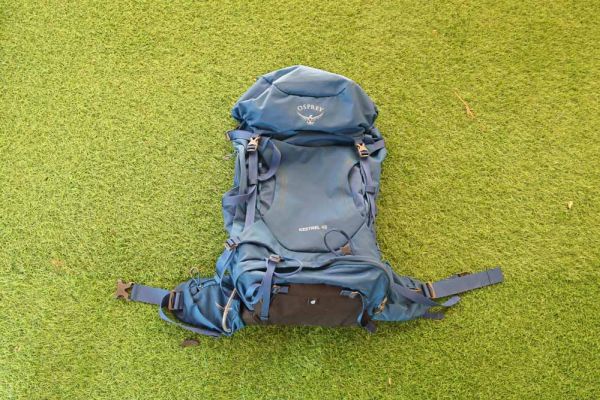
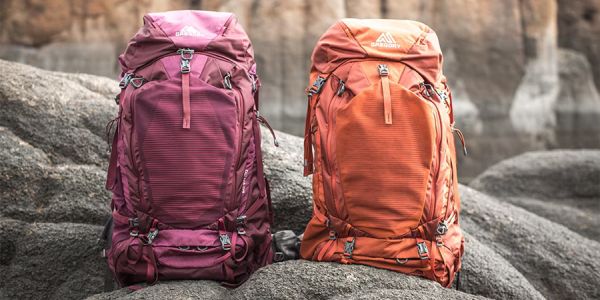
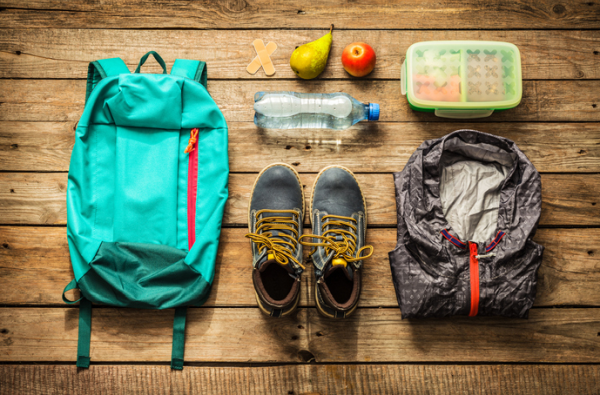
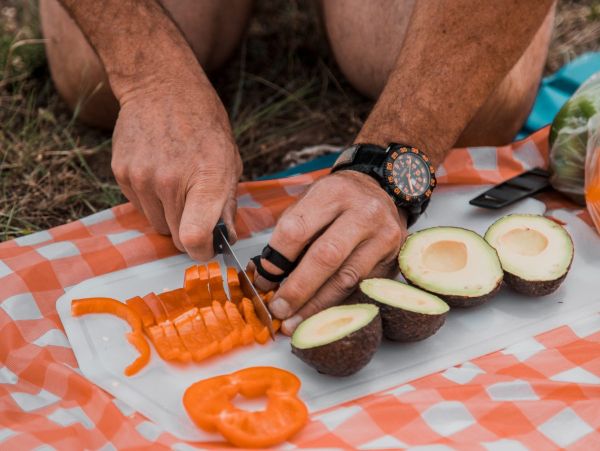
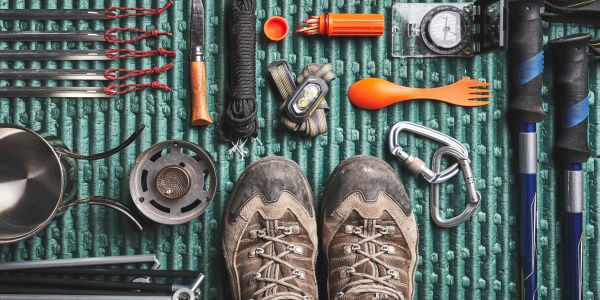
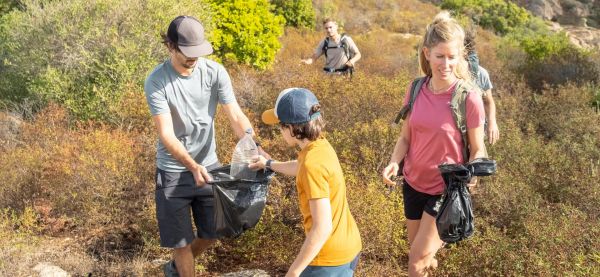
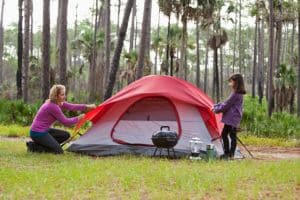
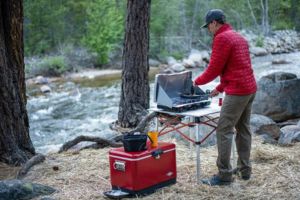
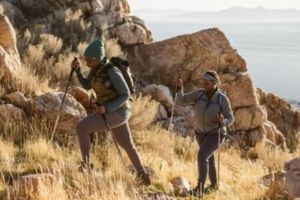
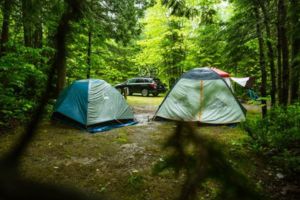
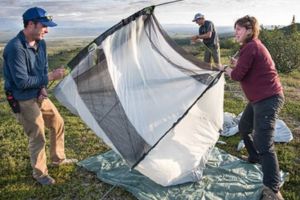
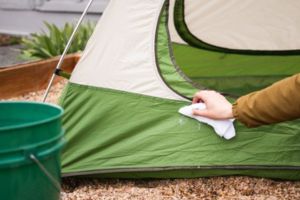

Leave A Comment